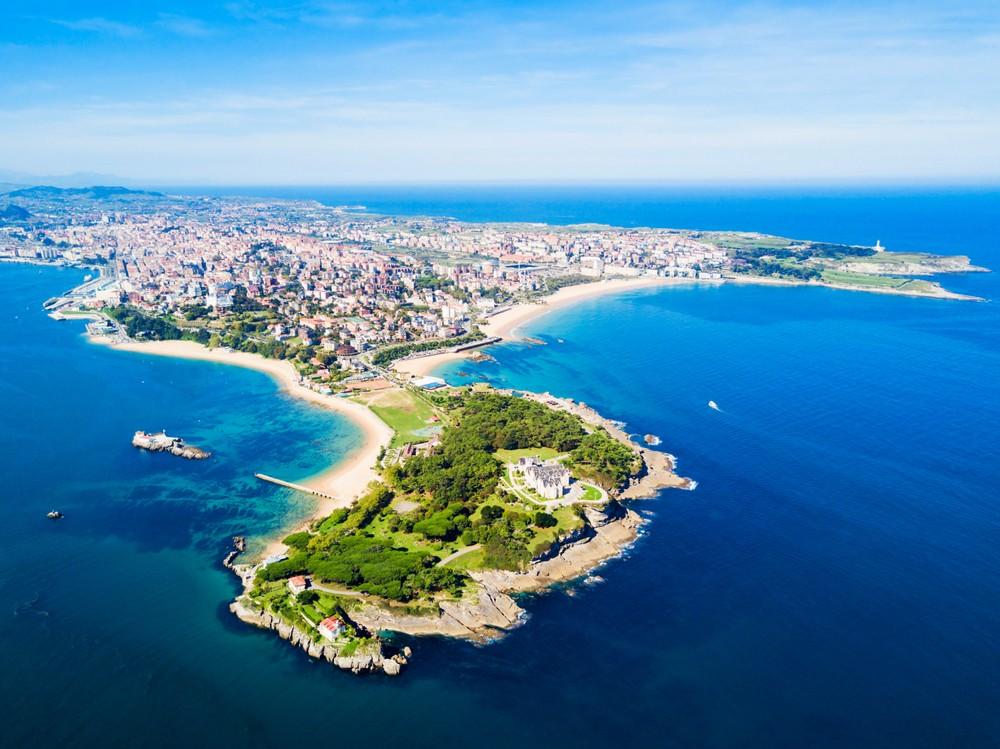In the north of Spain, on the Bay of Biscay, lies the province of Cantabria (Spanish. Cantabria). The beautiful port city of Santander is the capital and is also considered the economic and cultural center of the province.
Cantabria is also called España Verde – the green Spain – because the rainy area here is significantly greener than other parts of Spain. If you want to spend your holidays in Cantabria, you can look forward to wonderful landscapes, beautiful beaches and unique art treasures.
One of the many cultural highlights is the well-known Way of St. James, which leads through the capital Santander.
About 30 km from Santander, near the town of Santillana del Mar, are the well-known caves of Altamira, known worldwide for their cave paintings and a World Heritage Site since 1985.
Things to do in Cantabria
If you like hiking, you will have plenty of opportunity to do so in Cantabria, as the Cantabrian Mountains have more than 200 mountains with a height of over 2,000 mtr. With 2,648 mtr. the Torre de Cerredo is the highest mountain.
A special and magical place is El Soplao, located 60 kilometres from Santander. Here you will find a cave with underground wells and rivers, labyrinthine galleries, stalactites and stalagmites. Moisture and water have given the cave its shape over thousands of years. The tour of the cave takes about 1 hour.
The Cabárceno Wildlife Park in Obregón is also worth a visit. On a circular route of a good 20 km you can experience more than 100 animal species from 5 different continents. The park with its beautiful gorges, lakes and extensive enclosures can be explored on foot or by car.
Places to visit in Cantabria

Many charming coastal towns such as San Vicente de la Barquera, Castro Urdiales or Comillas are lined up along the coast.
The small port town of Hondarribia has a beautiful old town with the church of Santa María de la Asunción y del Manzano, which is well worth seeing, and a town hall with a beautiful baroque façade. The popular street San Pedro Kalea attracts with numerous tapas bars and many other good restaurants.
Gijon has a special tourist attraction with its aquarium. The aquarium is located directly on the beach of Poniente and has a lot to offer on three floors. A special highlight are the shark feedings, which take place twice a week.
To go on hiking tours in the Picos de Europa National Park, the nice town of Potes is ideal. Here, hikers will find everything they need in the mountains. If you want to enjoy a truly overwhelming panoramic view, you should take the cable car from Fuente Dé to the 2,503 mtr. high Torre de los Horcados Rojos.
Llanes is a charming fishing village and one of the most beautiful places on the coast. A special attraction for mountain bikers and hikers is the Senda de la Costa, a hiking trail that winds along the picturesque coast. The largest beach in the town is Playa de Toro.
The cuisine of Cantabria

Cantabria also has a lot to offer in terms of cuisine. For example, the paprika sausages chorizo and the black blood sausages morcielles are particularly popular here. Both are also used in the Fabada, a stew made from white beans. Another speciality is the blue cheese Cabrales, which matures in the caves of the Cabrales region. This cheese consists of a mixture of sheep’s, cow’s and goat’s milk.
The so-called guinea pig belongs to the scorpionfish family and is considered one of the ugliest fish. But its meat is very tasty and is therefore very popular in Pastel de Cabracho.
Beaches and nature in Cantabria
In Cantabria, more than 60 beaches await holidaymakers on more than 220 kilometres of coastline. One of the most beautiful and largest beaches, the 5 km long sandy beach La Salve, can be found in Laredo, a coastal town between the bay of Santona and the Ria de Treto inlet.
The longest sandy beach on the coast can be found in the seaside resort of Zarautz. It is a very popular meeting place for windsurfers. The town’s landmark is the Gothic fortified tower Torre Luzea, which is located in Nagusia Kalea Street.
On a true dream bay and surrounded by the foothills of the Pyrenees lies the seaside resort of San Sebastian (Donostia). The climb to the local mountain Urgull is worthwhile, because from here you have a good view of Concha Bay with its great beach.


